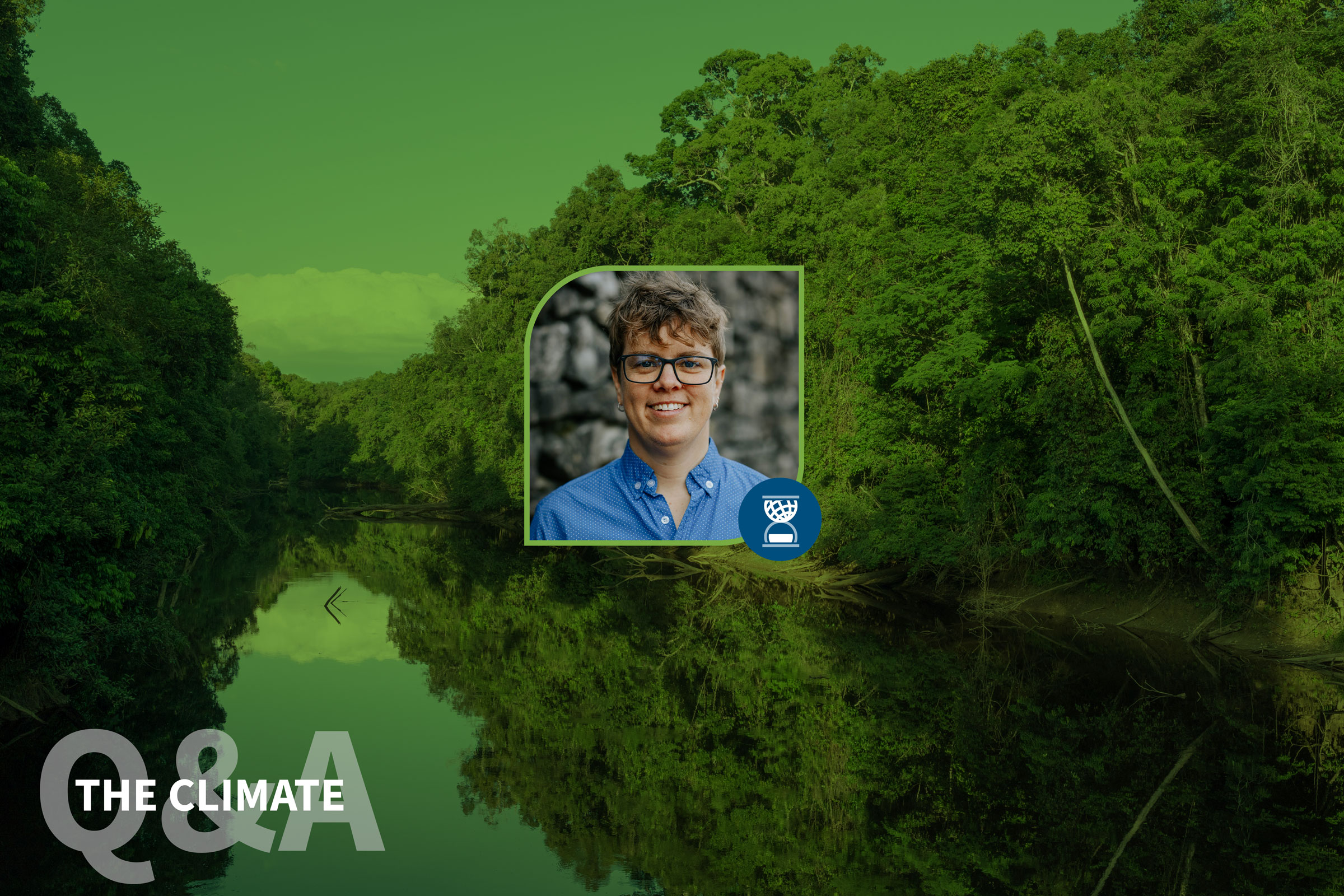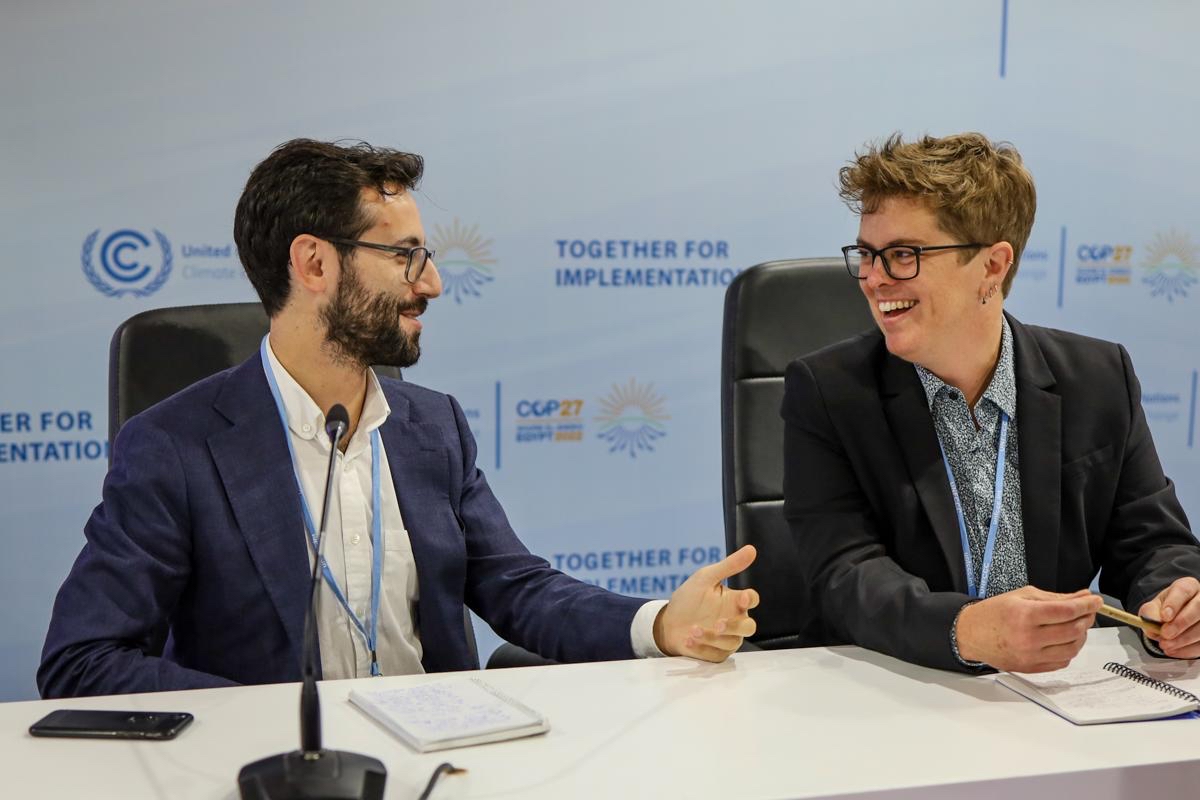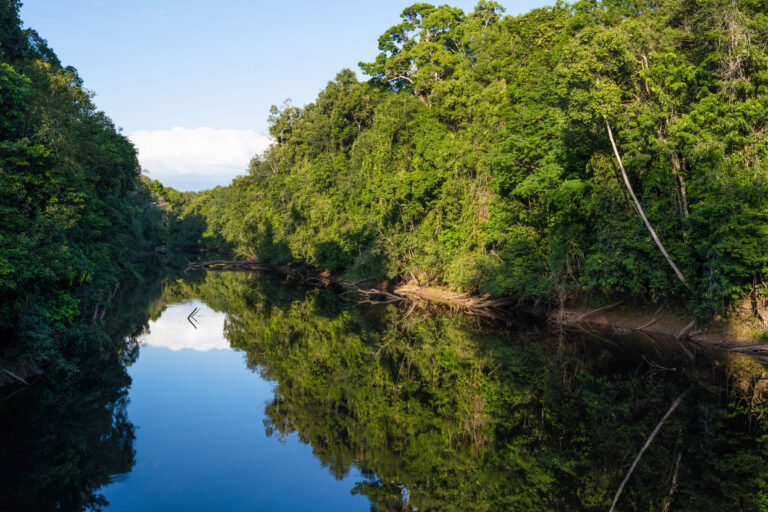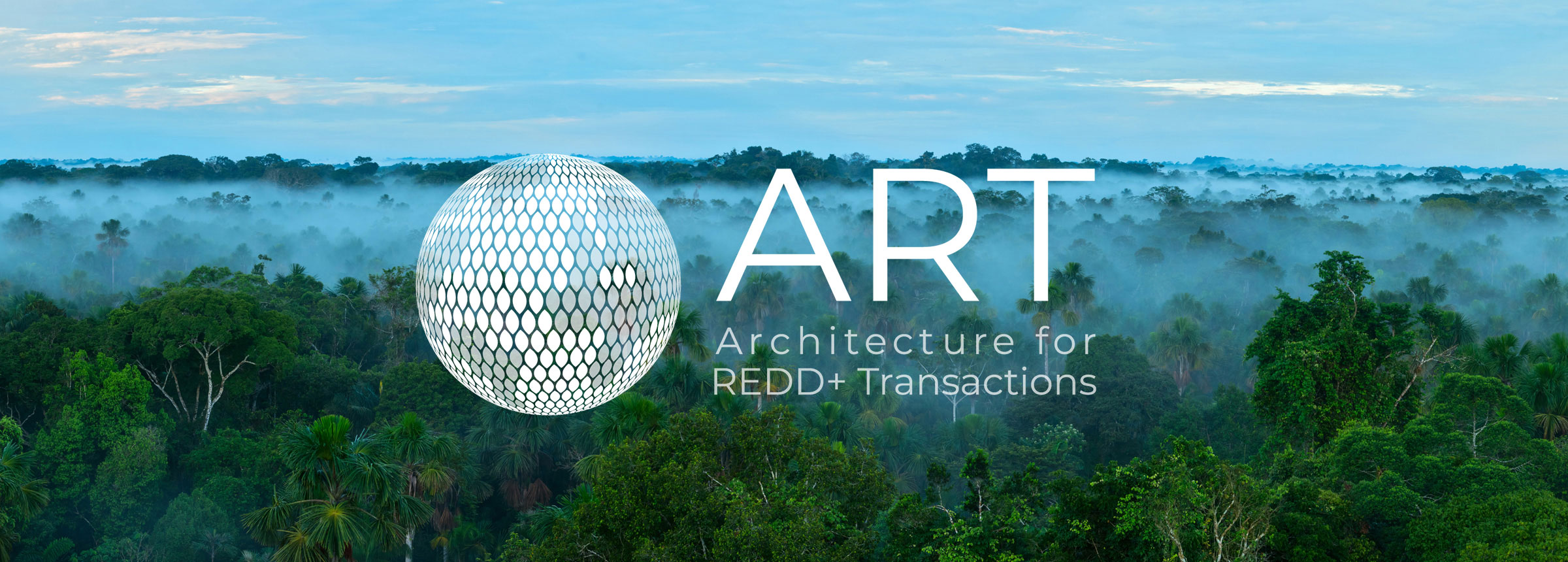
The Climate Q&A…
with Katie Goslee, Director of Winrock's Ecosystem Services Unit
Katie Goslee is the director of Winrock International’s Ecosystems Services Unit, a team of technical experts that develop and implement climate change solutions in the land use sector. She has over 20 years of experience in forestry, climate change mitigation and adaptation, greenhouse gas accounting, land use and land use change in over 24 countries across South America, Southeast Asia, Africa, the U.S., and the Caribbean. Katie has led a wide range of Winrock projects aimed at protecting ecosystems and biodiversity and addressing climate change, including ONE-SL and Private Investment for Enhanced Resilience.
What is ONE-SL, and what excites you most about the project and its progress in supporting emission reductions from reducing deforestation?
The Offset National Emissions through Sustainable Landscapes (ONE-SL) project aims to support countries in developing an operational jurisdictional REDD+ program with nested projects that can attract private sector funding. REDD+ stands for Reducing Emissions from Deforestation and forest Degradation plus conservation, sustainable management of forests, and enhancement of forest carbon stocks. It is an international mechanism to provide financing to ensure the climate mitigation benefits that forests in developing countries deliver, while recognizing that developed countries (and corporations) have a responsibility to provide this support.
ONE-SL is funded by the U.S. Department of State Bureau of Oceans and Environmental Scientific Affairs and implemented by Winrock with partners Wildlife Conservation Society, Climate Law and Policy and Natural Climate Solutions.
The project objective is to support countries in developing the ability to: 1) identify country-level emission reductions that go beyond nationally determined contributions (i.e., climate targets) submitted to the United Nations Framework Convention on Climate Change (UNFCCC); 2) produce fungible carbon credits for commercial actors; and 3) achieve important economic benefits for developing countries and environmental benefits within and beyond country borders. To achieve this objective, ONE-SL is providing targeted support in three countries – Colombia, Kenya, and Zambia – and is developing a Carbon Accounting Tool that will be globally applicable to help countries track emission reductions.
What is the difference between project-level REDD+ and jurisdictional-level REDD+?
Both project-level and jurisdictional scale REDD+ refer to an activity or collection of activities that reduces forest-based emissions and enhances removals in an accounting area. To generate fungible carbon credits, the activities and their impacts on greenhouse gas emissions are monitored, reported, and independently audited against accepted accounting standards that include provisions for environmental and social safeguards (called third-party validation and verification). The primary difference between the two is scale.
Project level REDD+ refers to specific activities undertaken by project developers in a specific area.
Jurisdictional REDD+ is when a country or sub-national region (the jurisdiction) estimates its baseline emissions from activities across all forests and determines overall emission reductions relative to the baseline from a collection of activities undertaken throughout the jurisdiction. REDD+ was formally recognized as a path to reduce emissions by the UNFCCC in 2013. Since then, activity at the jurisdictional level has largely been incentivized through bilateral and multilateral funding of results-based payments to countries that demonstrate a reduction in emissions from implementation of REDD+. Carbon market payments for fungible carbon credits generated by REDD+ have occurred at the project level until recently. This is changing very rapidly as there is a growing recognition by the markets that nature-based solutions, and especially forests, play a critical role in our ability to meet the Paris Accord commitments. The only way to harness the potential of the sector, however, is to significantly increase the scale, to build confidence in the results, and to mobilize financing from both the private and public sectors. As a result, private sector demand for high integrity jurisdictional REDD+ credits and nested project REDD+ credits is growing significantly, and programs providing a pathway to market for jurisdictional REDD+ are critical, including the Architecture for REDD+ Transactions, Verra’s Jurisdictional and Nested REDD+ Standard, and the LEAF Coalition.

What is a jurisdictional REDD+ program with nested projects, and why might that be more attractive than other forms of REDD+ to companies aiming to achieve net zero?
Jurisdictional REDD+ by its nature has the capacity to facilitate significant emission reduction results at the scale needed to better mitigate the impacts of climate change from land use and land use change. However, efforts across scales are critical as outcomes will be more sustainable over time if stakeholders at all levels are engaged with and receiving benefits from REDD+ programs. Nested projects have accounting approaches that are aligned with jurisdictional efforts, and they are integrated into jurisdictional planning and monitoring for both carbon benefits and safeguards. This approach can help to address many of the common criticisms of project-scale REDD+. Supporting this integrated approach is critical for companies that aim to support climate mitigation activity or purchase credits to offset their net emissions.
ONE-SL is working to develop enhanced understanding and capacity for successful implementation of nested jurisdictional REDD+ programs among countries, project developers and commercial industry. ONE-SL supports countries in their ability to scale project-level REDD+ into jurisdictional REDD+ programs with the capacity to yield high-quality offsets attracting private-sector commitment.

Why might ONE-SL’s work/results be important to carbon offset purchasers? How can supporting countries’ abilities to yield high-quality offsets accelerate forest conservation and emissions reduction?
Developing countries, which are home to the vast majority of the Earth’s forests and therefore storing substantial amounts of carbon, do not have the financial means to protect these forests without support. Nor should they bear the financial burden of addressing the climate crisis that is the result of activities undertaken from developed countries. However, to ensure that forest carbon credits are generated from activities that legitimately avoid emission reductions, there is a significant burden of proof.
The ONE-SL project is providing technical support and capacity strengthening to countries to enable them to better meet the requirements of standards to generate JREDD+ credits that can be sold in the voluntary carbon market (VCM) and emerging compliance markets. When countries have the capacity, will, and financial means to generate JREDD+ credits, this can become a positive cycle, leading to benefits to the country and communities to ensure continuation of activities that contribute to reducing deforestation and the resulting emissions.
What specific tools is ONE-SL developing to help project managers measure emissions reduction from improved forest protection ─ and why is that important in the climate finance picture?
ONE-SL is developing a tool to enable complete and transparent tracking of emission reduction commitments from the forest sector. This includes countries’ Nationally Determined Contribution, VCM credits from REDD+ projects, market-based payments for JREDD+ and VCM credits from JREDD+. This will ensure that there is not double-counting, and all claimed emission reductions provide actual and true benefits to the environment.

What other kinds of tools has Winrock developed to protect ecosystems and contribute to the fight against climate change?
Winrock’s Ecosystem Services unit has been a leader in development of tools for protecting ecosystems and addressing climate change. For instance, Winrock developed the first AFOLU Carbon Calculator for USAID to estimate the impact of projects it funds on emissions and emission reductions from agriculture, forestry and other land uses.
The Forest Landscape Restoration Carbon Storage Calculator uses a global database of carbon removal rates to enable users to estimate the impact of landscape restoration activities on carbon storage. The calculator allows users to estimate CO2 benefits and the potential climate impacts of different types of land use, including forest management and protection, reforestation, agroforestry, cropland and grazing. The tool uses accounting methods from the Intergovernmental Panel on Climate Change paired with global datasets and provides detailed descriptions of the methods, data and sources of uncertainty.
The Watershed Ecosystems Service Tool, or WESTool, is a geospatial tool that was developed to explore how ecosystem services, land uses, and socioeconomic factors interact across Cambodia’s landscapes. WinRes is an Excel-based tool that assesses how investments can mitigate climate risk and improve climate resilience.
Finally, the ECO Game is a tool that provides an interactive approach for users to learn about impacts that a variety of community decisions and actions can have on water, environment, income, and community well-being.
Related Projects

Offset National Emissions through Sustainable Landscapes (ONE-SL)
As businesses strive to achieve a carbon neutral footprint and demand for carbon offsets increases, developing countries are seeking new ways to finance efforts to reduce emissions, including from forest land use. The Offset National Emissions through Sustainable Landscapes (ONE-SL) project aims to develop enhanced understanding and capacity for successful implementation of nested jurisdictional Reducing […]
Private Investment for Enhanced Resilience (PIER)
PIER is an innovative climate finance project that incentivizes private sector investments in support of national development objectives that address climate change, such as National Adaptation Plans (NAPs), within countries of strategic interest to the United States, including Bangladesh, Dominican Republic, Ghana, Grenada, Guyana, Indonesia, Jamaica, Mozambique, Peru, Saint Lucia, Tanzania, and Vietnam. PIER demonstrates […]
